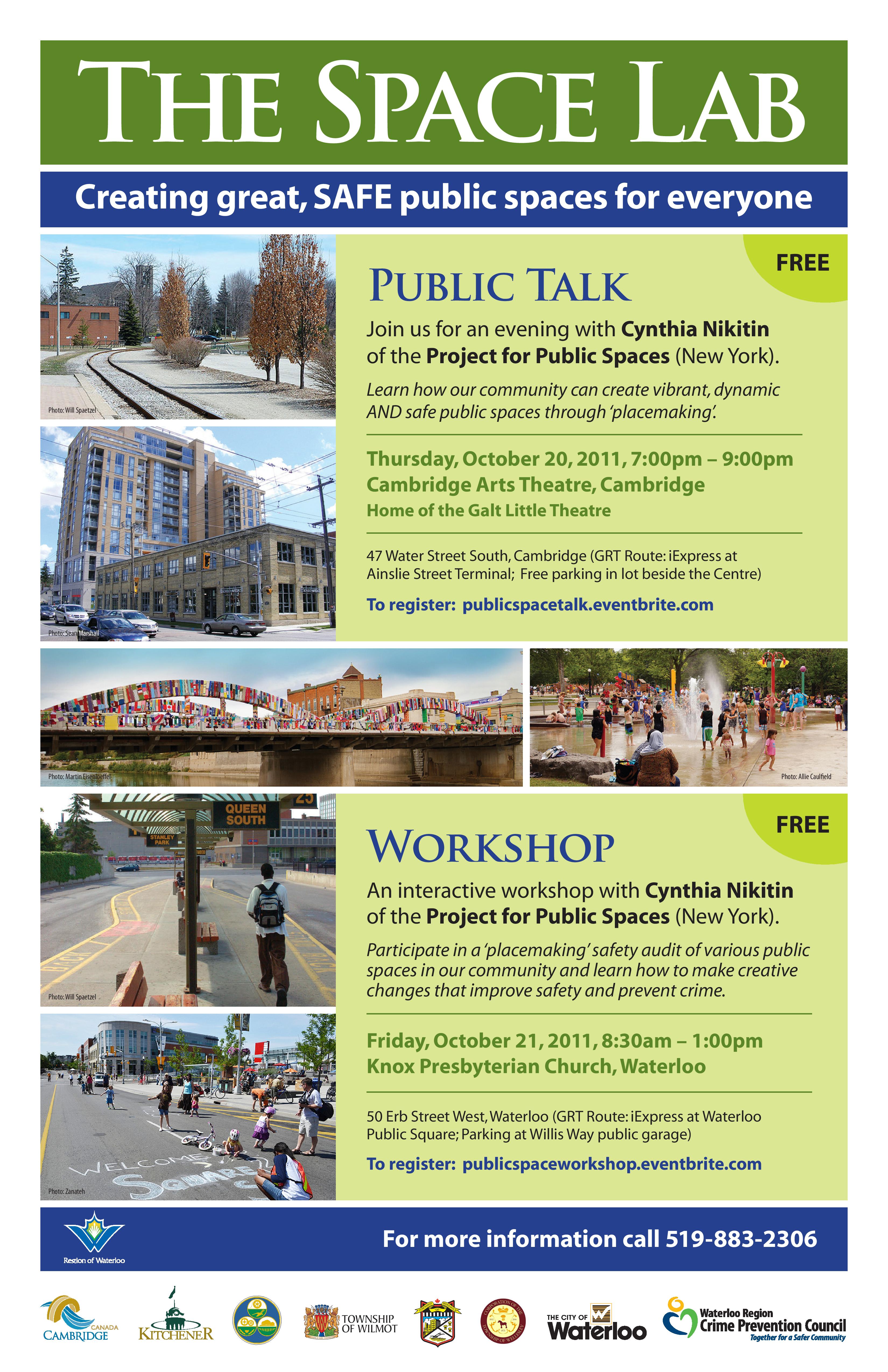‘Placemaking’ for a Safer Community
‘Placemaking’ is fast becoming a new ‘buzz word’. But what does it really mean anyway? It ends in ‘ing’ so that means it’s a verb, which means some kind of action is happening… What kind of action is required to ‘make a place’? And what does ‘making a place’ have to do with crime prevention and being smart on crime?
Well, the good folks at the Project for Public Spaces (PPS) in New York have a lot of experience with ‘placemaking’. In fact, it’s their entire philosophy. To PPS, placemaking is simply an approach for creating and/or transforming safe public spaces (e.g. civic squares, markets, streets, parks & trails, public buildings, transportation, downtown areas, etc). This approach engages community residents and decision-makers in the process and the ultimate purpose is to create spaces and places that are vibrant, dynamic, safe and healthy.
So, why does this matter to crime prevention?
We know from the work of crime prevention through environmental design (CPTED) that people feel uncomfortable or fearful in places and spaces that look and/or feel unsafe or dangerous. There’s a domino effect here – if people don’t feel safe in a public place, people don’t go there. If people don’t go there, most likely the space doesn’t get used for what it was intended. When ‘legitimate’ use of a space doesn’t take place, quite often, less desirable activities will take its place. Placemaking can help to turn a place around.

One of our roles as the Waterloo Region Crime Prevention Council (WRCPC) is keep our area municipalities engaged in the very important role they have to play in municipal-based crime prevention. Building on events we’ve done in the past, WRCPC has engaged Cynthia Nikitin from Project for Public Spaces to visit Waterloo Region on October 20 & 21, 2011. Cynthia will present a free public talk and workshop on community safety and crime prevention through placemaking.
You can register here for both events.
So, why does this matter to municipalities?
Municipalities are the closest level of government to the places where we live, work and play. Decisions made at the municipal level have the most direct impact on the public spaces in our neighbourhoods and communities. We know that vibrant, dynamic, safe & healthy public spaces and neighbourhoods play a very important part in community life. They are effective for:
- increasing social interaction and cohesion
- reducing crime and fear of crime
- increasing perceptions of safety
- encouraging legitimate activity & discouraging less desired activity
- developing a sense of ownership among community residents
- improving “liveability” in neighbourhoods
While talking with many people about these events, I’ve heard the same comment several times…. “Wow, I’ve never thought about crime prevention that way before, but it makes total sense!” Smart on crime is all about using evidence-based solutions for challenges facing our communities related to crime, fear of crime and victimization. Placemaking has been proven to work. Often, the best solutions are not the most expensive or the most complicated. The solutions that work are the ones where the community is directly involved in the creating the solution and where the community takes continued ownership for making a place their own.
We’ll be posting several more articles over the next few weeks on the topics of crime prevention, placemaking, public space and community safety. Have you had experiences with placemaking? Good, bad, or otherwise? Tell us your placemaking story.
